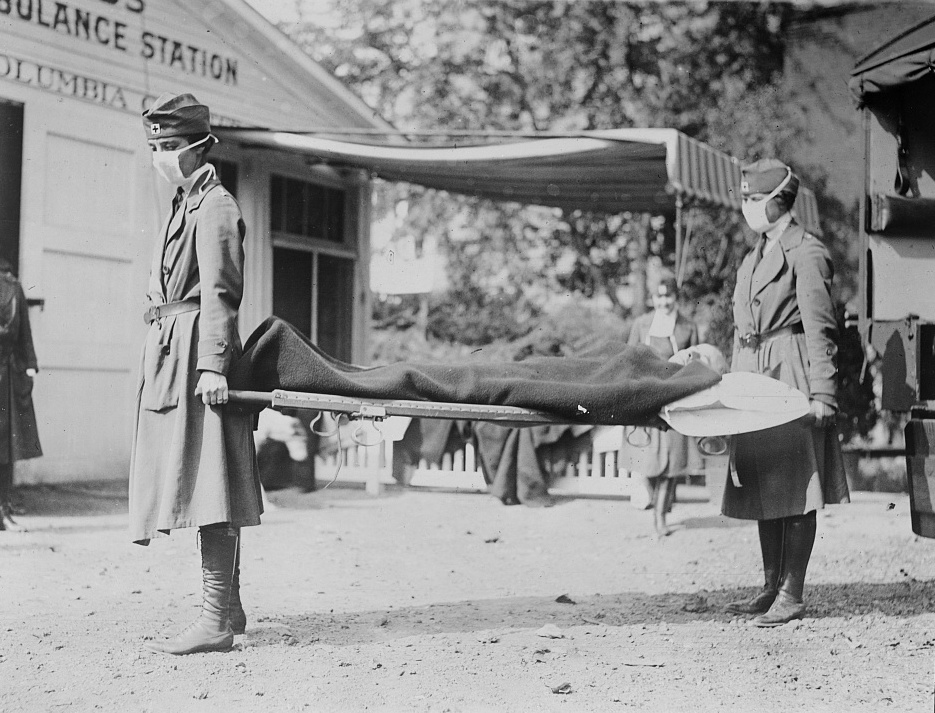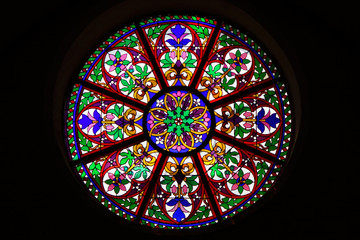Churches during Crisis
Spanish Flu Epidemic
"Avoid needless crowding- Influenza is a crowd disease." -Rules for Personal Defense Against Spanish Influenza, The Evening Star, September 22, 1918, p.13.
In October 1918, the city’s churches were closed by the D.C. Health Department in response to the Spanish influenza epidemic. The city first began reporting large numbers of influenza cases beginning in August 1918, although it likely was affecting residents prior. Most of the public assumed that the epidemic was contained to the military, so efforts to curb the flu first affected military members. Camp A.A. Humphreys, now Fort Belvoir, reported that thirteen military members were under observation on September 20th. The following day, the city’s first influenza patient died at Sibley Hospital on North Capitol Street. By September 25, the American Red Cross began making 45,000 facemasks for soldiers and patients at Walter Reed General Hospital. In the following days, Health Officer William C. Fowler finally began to take the cases seriously. He would go on to ask residents to remain outside as much as possible to reduce transmissions and to postpone unnecessary meetings if possible.
"Church buildings may open for private devotions, such as meditation and prayer. Congregations of persons will be prohibited. The restriction applies to weddings and funerals." -The Evening Star on October 9, 1918, p. 9.

Demonstration at the Red Cross Emergency Ambulance Station in Washington, D.C., during the influenza pandemic of 1918. From the Library of Congress, Prints and Photographs Division, Digital ID 18662.
By the first of October, 213 cases of influenza had been reported and 21 resulted in death. The following day, schools were temporarily closed and streetcars were ordered to keep their windows open as much as possible. On October 3, city officials ordered churches, theaters, movie houses, dance halls, and any other places with indoor meetings to close. That Sunday, churches held outdoor services in an attempt to get around the restrictions imposed by officials. By the following day, the reported cases of influenza reached 1,201. In response, Health Officer Fowler forbid area churches to host public and church funerals. Beginning on October 9th, the churches were also prohibited from holding outdoor services. Fowler received a significant amount of criticism from the religious community regarding this closure.
"It's necessary that the spiritual dynamo be kept running at full speed...Maintaining the spiritual morale is just as important as making shot and airplanes, and the people need the comfort of church services." -Resolution of the Pastors' Federation of the District of Columbia on October 7, 1918.
At this time, the death toll was at 39. On October 26th alone, 402 cases of influenza were reported. Amid tensions from religious groups, churches that held mid-week services were allowed to reopen on Thursday, October 31. This allowed the Catholic and Episcopal churches to celebrate All Saints’ Day. All churches were able to re-open on November 3, 1918. By November 18th, Washington had reported 24,464 cases of influenza and 1,908 deaths. Influenza reports continued in large numbers through the winter before finally declining in February 1919. The epidemic was largely squashed by March.
World War II
At the close of World War II, Chevy Chase Presbyterian Church adopted a Dutch Reformed congregation in Hedel, Holland. The church had suffered significant damage due to bombing. Two members of Chevy Chase Presbyterian, who were stationed in occupied Germany at the time, informed their home church about the devastation they witnessed. Chevy Chase Presbyterian sent the church food, clothing, tools, and live animals to rehabilitate the congregation. The Reformed Church sent 2,000 tulip bulbs to Chevy Chase Presbyterian in 1950 as a token of their gratitude. Following the assistance to Hedel, the Presbyterian Church also helped rebuild St. John’s, a Lutheran church located in Darmstadt, Germany that had also been affected by bombings.
Iranian Hostage Crisis
For 444 days, American diplomats were held hostage in Iran during 1979-1981 after the takeover of the U.S. Embassy in Tehran. Bruce Laingen was the most senior official being held and his home parish was All Saints’ Episcopal Church. During the ordeal, All Saints held prayer vigils in honor of Bruce and the other hostages. Volunteer Robert A. Aylward ensured that bells of All Saints’ rang out at noon every day, beginning at Thanksgiving and finally ending on the day the hostages were released.
Renovations
In the summer of 1999, The Chevy Chase Presbyterian Church could not offer worship services amidst extensive renovations that were needed to correct significant water damage. In order to serve the community, All Saints' Episcopal Church offered their facility to conduct joint services. The two churches’ choirs were also combined during this time. Later when All Saints’ was conducting renovations, Chevy Chase Presbyterian returned the favor and helped house services during construction.



